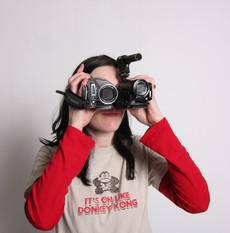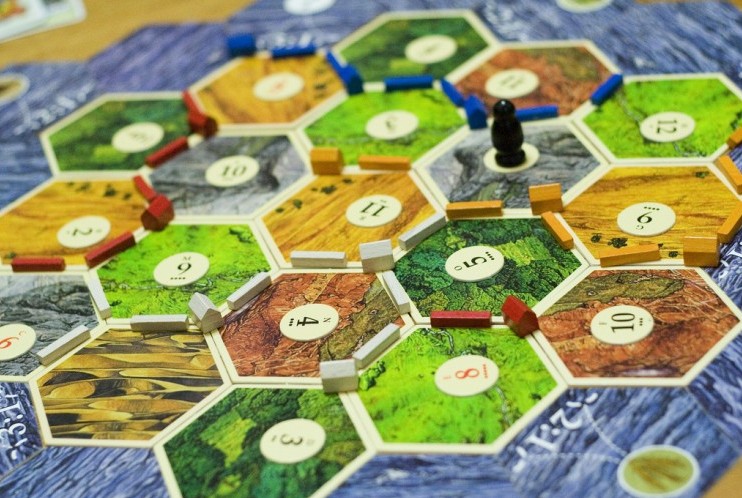
How do you feel the documentary has been received by the gaming community?
I think it’s been really well-received. I still think there are tons of people out there who just don’t know about it. That’s the thing too: I wasn’t even thinking that prior to launch. I was so focused on ‘we have to get this done’. That part of ‘oh no, are people going to like it?’ didn’t click. And then there was this moment I’m like “Oh my god, what if people don’t like it?”, because it’s amateur. It’s not shiny and highly polished like Indie Game: The Movie that’s much, much higher quality, and Two Player Productions was starting to rock right then with their Mojang documentary [Minecraft: The Story of Mojang] that they are working on. So the success of this one really had to rely on just heart; it had to rely on the story and the heart, and just conveying the information. I think it’s really the strength of the subject matter and the community that made it successful. It wasn’t me. It was just that I was able to get the right things and put them together, and I had access to the right stories. But it’s been really well-received, and I’m very happy with it.
And it’s actually going to be available digitally in January!
What was the most difficult part of making the film?
One of the things that comes to mind was cutting it down, because I just had so much stuff that I really liked. . . if I didn’t have someone else editing it, it would have been twice as long. It is really hard to go through that just by yourself. You won’t let go of stuff that you should let go of, you just won’t. You’ll form personal attachments, and there was a lot of stuff that I had to cut.
One of the hardest things is when you interview somebody and you don’t wind up using any of that interview in the film. Then you’re feeling, not necessarily like you wasted the time, but like they’re going to feel bummed about that. Because they get all excited. I’m a people pleaser; I want to make everybody happy. I really was so thankful that people took the time to be interviewed, especially where I’m nobody coming there like, “Oh I’m going to make a movie!”
There were a couple – two or three – that I was not able to use at all. . . There was a really nice couple I interviewed on the floor at the Gathering of Friends, this Canadian couple. They were super cool, but the audio was bad so I just couldn’t use it. I had to make the decision to axe it.
And that guy at the very, very end [of the movie], Zendo designer Kory Heath, said all he wanted to do, the only reason he cares about money, is that he just wants to play or design board games every day. I love that part, and in that case I was happy I was able to do that, at least sneak that part in because I was so in love with that quote. Because he meant it too. He meant every word of it.
On the flip side, what was the most rewarding moment of the whole process?
One of the most rewarding moments was definitely when the lights came up at M.I.T. for the premier screening, the first time I’d been there in front of a big audience. I mean 50 people, not huge, but for me that was crazy. They applauded, and I was like, “Oh my god, they liked it.”
But even bigger than that was definitely the PAX East screening. Because that was big . . . and people were laughing at the right parts and they were involved and just walking up [to me] because the year before that I’d been filming there. It was a cool full-circle thing, and then to have a whole panel room of my own, that was definitely massively rewarding. I loved that.
We read a couple other interviews that you’ve done, and you mentioned in at least one of them that the New England area is really great for gaming and everything. Do you think it’s the same way in other parts of the U.S.?
I’ve actually heard that it’s not the same. I was on a radio show with some guys in Texas, and it’s really hard for them to find gaming groups and stores. . . I mean, it’s spreading, it’s changing. We are lucky to have places like Myriad [Myriad Games] and a lot of other board gaming stores around here, but it goes in tiers. There are places where there aren’t a lot of game stores; you have to order the stuff online. . .Then there are places where we’ve got specialty stores like Myriad, and then there are places I’m jealous of that have gaming cafes serving lattés and stuff. I’m so jealous.
There were some games that you really focused on in the movie, but there are so many games out there. How did you narrow it down?
Right. Well, like I said with Christophe [Boelinger], that was random. So Dungeon Twister was just out of the blue, but there were certain ones that I was like, “I definitely want to hit these”. Like Power Grid and Friedemann because that was just huge. He’s awesome for this kind of documentary because he has trademarks – the green hair thing, the green box thing – and also he’s very cool to talk to. He’s very personable, and the accent’s cool.
Then Dominion like I said, because that was such a mystery at the time, and it was a Spiel game. (Although it wasn’t at the time – that was stupid luck that I happened to get those interviews beforehand.) That was really good. But I wanted to interview the Dominion guys because I had heard ahead of time that it was good, and I also had played the prototype of Dominion way back. It had just been really fun. It’s very Magic-y so I was into it.
And obviously Klaus Teuber, because if you’re making a documentary about this stuff, you really want to get the fundamentals. Everybody’s saying [Settlers of Catan is] the gateway game. Whether it is or not, it’s very accessible and it’s very popular, and that’s your biggest shot of people knowing anything about this on the street. If you walk up to someone randomly and say, “Do you know about Settlers of Catan?” they might say yes. But if you say, “Do you know about German-style games or designer games?” they’re probably going to say no.
Basically I picked the games that were very well known, very popular, or very interesting for other reasons. And I left it open so there was enough time to get some of the other stuff in there, things that I had came across that had seemed cool like Chris Konieczka’s Battlestar Galactica. I was a huge Battlestar fan. So, a lot of it is personal bias. But he contacted me because he was actually going to be in this area – that was also random. He was like, “Yeah I can swing by for an interview,” and I’m like, “Yes please!”
Cool.
Yeah, he was awesome, and he was so humble. When he told the story about how Battlestar launched at GenCon…he was so cool because you could see the authenticity in him.
That’s what I really like and what really makes me passionate: seeing other people in their element. Just seeing their eyes when they’re having an awesome time, and they’re doing the thing that they most love in the world. And you could just tell with him that was where he was at.
![]()
Be sure to check out Going Cardboard if you haven’t yet. Not only does it come with a great film and tons of bonus footage, but it also contains Shoot-Out, a 2-player game designed by the aforementioned Reiner Knizia.
You can discuss this article over on our forums!
If you have any direct questions on Lorien’s interview or information within, they can be sent to info@cardboardrepublic.com

